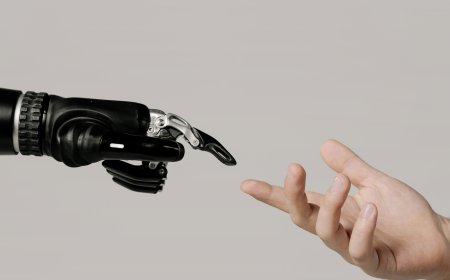Intelligent Process Automation: Combining RPA with AI for End-to-End Workflow Optimization
Evolve beyond simple task automation. Discover how integrating Robotic Process Automation (RPA) with AI cognitive capabilities can automate complex, decision-based processes for unprecedented efficiency.

While traditional Robotic Process Automation (RPA) has been a game-changer for automating high-volume, repetitive tasks, its rule-based nature is a double-edged sword. It excels in predictable environments but stumbles when faced with variability, unstructured data, or the need for judgment. This is where Intelligent Process Automation (IPA) emerges as the next evolutionary leap. IPA is not a single tool, but a powerful suite of technologies that combines the task-execution prowess of RPA with the cognitive capabilities of Artificial Intelligence.
This article delves deep into how this synergy creates a truly "intelligent" digital workforce. We will explore the core technologies that constitute IPA and then examine detailed, real-world use cases that demonstrate its transformative potential. You will learn how IPA moves beyond simple task automation to manage entire business processes autonomously, leading to significant cost reduction, drastic error elimination, and the liberation of human talent for higher-value strategic work.
The Core Components of Intelligent Process Automation:
The power of IPA lies in the integration of these technologies:
-
Robotic Process Automation (RPA): The foundational "hands" of the system. RPA bots reliably execute rule-based, repetitive tasks across software applications, such as data entry, copy-pasting, and form filling, with 100% consistency.
-
Machine Learning (ML): The "brain" that enables adaptation. ML algorithms identify patterns within vast datasets, make predictions, and learn from outcomes. This allows the system to handle exceptions, prioritize tasks, and continuously improve its performance without explicit reprogramming.
-
Natural Language Processing (NLP): The "language comprehension" module. NLP enables the system to read, understand, and interpret human language from various sources like emails, customer chats, contracts, and documents, extracting intent and key information.
-
Computer Vision: The "eyes" of the operation. This technology allows bots to "see" and interpret information from screens, scanned documents, images, and PDFs, even when the data is non-digital or unstructured.
-
Process Mining & Analytics: The "GPS" for business processes. This technology uses event log data from your existing systems (like ERPs and CRMs) to visually map out your actual processes—revealing bottlenecks, deviations, and optimization opportunities you didn't know existed.
Detailed Real-World Use Cases of IPA in Action:
-
End-to-End Invoice Processing:
-
The Challenge: Processing invoices from thousands of vendors, each with different formats (PDF, paper, email), often containing non-standard line items or errors.
-
The IPA Solution:
-
Computer Vision & NLP extract data from incoming invoices, regardless of format.
-
Machine Learning validates the extracted data against purchase orders and delivery receipts. It learns to flag discrepancies (e.g., quantity mismatches, price changes) for review.
-
RPA then routes flagged invoices to a human for exception handling, while automatically processing approved invoices in the financial system and initiating payment.
-
-
The Outcome: Touchless processing for ~80% of invoices, reduced processing time from days to hours, and improved accuracy in financial reporting.
-
-
Intelligent Customer Service Triage:
-
The Challenge: High-volume customer service inboxes where requests range from simple password resets to complex technical issues, leading to slow response times and customer frustration.
-
The IPA Solution:
-
NLP analyzes the content and sentiment of incoming emails and chat messages.
-
Machine Learning classifies the request by intent (e.g., "billing inquiry," "technical support," "complaint") and predicts its urgency.
-
RPA automatically executes simple requests (e.g., sending a password reset link, providing tracking information) and routes complex, high-urgency cases to the most appropriate human agent along with relevant customer data.
-
-
The Outcome: Drastically reduced first-response time, improved customer satisfaction (CSAT) scores, and allowed human agents to focus on complex, value-added interactions.
-
-
Proactive Compliance Monitoring and Reporting:
-
The Challenge: Ensuring adherence to ever-changing industry regulations (e.g., KYC in banking, SOX in finance) is a manual, time-consuming, and risk-prone process.
-
The IPA Solution:
-
Process Mining first identifies all transactions and processes that fall under regulatory scrutiny.
-
NLP scans internal communications and contract databases for non-compliant language or activities.
-
Machine Learning models continuously monitor transactions in real-time, flagging anomalous patterns that indicate potential fraud or compliance breaches.
-
RPA compiles the necessary data and auto-generates compliance reports for auditors.
-
-
The Outcome: A proactive, always-on compliance stance, reduced risk of hefty fines, and significant savings in audit preparation time and costs.
-
Conclusion:
Intelligent Process Automation represents a paradigm shift from rule-based task execution to a truly cognitive, autonomous digital workforce. By combining RPA with Machine Learning, NLP, Computer Vision, and Process Mining, organizations can move beyond repetitive tasks to optimize entire business processes. The result is faster, more accurate operations, reduced costs, improved compliance, and the liberation of human talent for strategic, high-value work. Companies that adopt IPA strategically gain not just efficiency, but a sustainable competitive advantage in an increasingly dynamic business environment.
What's Your Reaction?






























































































